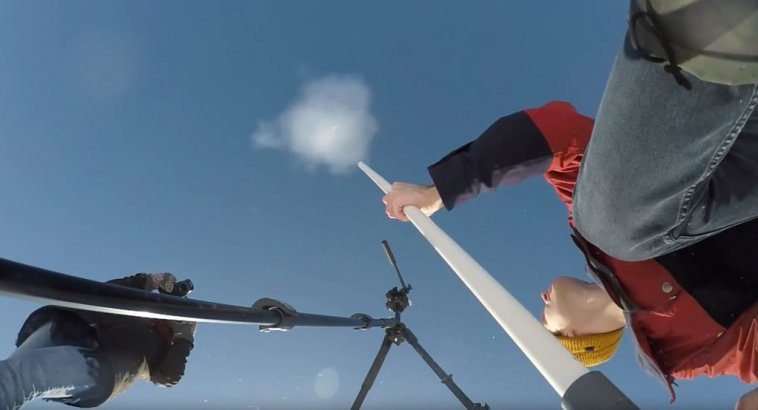A popular YouTuber named Austin used 3D printing to create rockets that launch with compressed CO2. He tried to modify the rockets to include an onboard camera, and his entire trial and error process was captured on video.
Not only is 3D printing technology being applied to industries across the world, it’s also commonly used to take us beyond orbit. From experimentation on SpaceX’s Dragon to 3D printed rocket engines used to deploy satellites, 3D printing technology has helped reignite the exciting space race.
But you don’t need to be a rocket scientist to 3D print and fire up your own functional projectile. There are plenty of projects and experiments out there for those who want to launch DIY 3D printed rockets.
One of the latest attempts come from Austiwawa, a popular YouTube channel with 43k subscribers, created by an adventurous maker named Austin. Most of his videos feature interesting DIY projects that involve a mixture of electronics, engineering, and of course, 3D printing.
One of Austin’s most popular uploads is a video in which he makes 3D printed rockets and launches them using CO2 cartridges. In his latest video, he tries modifying this creation by installing both mini pen and USB cameras.
Rather than 3D printing a brand new rocket, Austin opted to make an extension piece for his existing design. His rockets were 3D printed on a Creality CR-10, and operate using a spring-loaded firing mechanism and 12 gram CO2 cartridges, the same that are normally used in paintball or airsoft guns.
Unfortunately, the 3D printed rockets weren’t successful at capturing much usable footage, but the project makes for an interesting showcase of trial and error, as you can sense Austin’s refusal to give up throughout the 13-minute video.
3D Printing Mini Rockets for CO2 Lift-Off
Although the first, second, or even the third tests didn’t work out as planned, Austin went back to the drawing board to come up with some improved rocket designs.
After the initial failure, the YouTuber modified his rocket design to include longer fins and space for the CO2 container at the top, changing the center of gravity. He tried out three varying designs equipped with different sized nozzles. Next, he tested out which design would work best before mounting the camera.
This time around, rather than using a pen camera, Austin opted for a USB camera. After further testing, he decided to attempt new modifications to the rocket design, but kept facing issues with the 3D printed rocket.
Austin attributes this failure to the fins not cutting through the air enough to keep the rocket stable, while the footage is compromised due to the rocket’s continuous post-launch spin. Finally, after seven unsuccessful trials, he decided to switch from the DIY rocket to a model rocket to see if it would offer more stability to the camera.
This model rocket held the unused pen camera and managed to launch upright, unlike most of the more inconsistant 3D printed versions. Strangely enough, once launched, this rocket was never found, providing a suspenseful and humorous ending to the video. However, on this final attempt, we do get to see some exhilarating footage before the rocket spins out of sight.
Unfortunately, Austin was unable to capture any worthwhile footage from the 3D printed CO2 rockets. We still certainly admire his perseverance, which is necessary with advanced DIY projects like this one.
Needless to say, with just a little bit of patience, creativity, and a 3D printer, you can also watch your own DIY projects soar high into the sky.
If you have any tips or suggestions for Austin, he asks that you kindly leave them in the comment section of his video, which you can watch below.
Source: Makezine
Website: LINK



